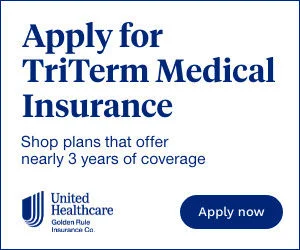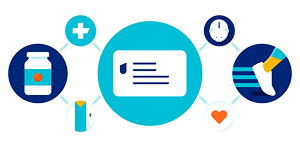If you’re rolling off your parents’ insurance or don’t have health insurance coverage through your job, you’ll need to buy it for yourself. While the Affordable Care Act certainly makes that process possible, it may not make it any easier.
“Our healthcare and our finances are intimately related,” says Caitlin Donovan, senior director of the National Patient Advocate Foundation in Washington, D.C.
So do yourself (and your bank account) a favor and take the time to enroll in your ACA benefits with confidence. Here are 8 common mistakes you should try to avoid.
1. You rely on auto-enrollment during ACA
It can be tempting to just let your insurance provider re-enroll you in the same (or a similar) healthcare plan. But just because the insurance you chose last year was a good choice then doesn’t mean it is now. You could be missing out on a plan that better fits your needs.
“Especially this year, there are a lot of new insurers that entered the market,” says Thomas Buchmueller, Ph.D., a health insurance economics expert at the University of Michigan’s Stephen M. Ross School of Business in Ann Arbor, Michigan.
Estimates show the average consumer will have 83 plans to choose from, compared to 46 plans a year ago, per the Kaiser Family Foundation. “So there are a lot of options you probably didn’t consider when you signed up for your current plan.”
Maybe you chose the cheapest plan last year, but chances are it’s not the cheapest plan anymore. Bottom line: You won’t know if you don’t check.
Want to learn more about getting covered during ACA Open Enrollment? Contact a licensed insurance agent at 1-800-273-8115 to see if there’s a UnitedHealthcare ACA plan offered where you live.
2. You get overwhelmed by all the options — and just pick one at random
So back to those 80-plus plans for a moment. Having lots of options is both good and bad: More choices means more competitive pricing, but they can get overwhelming fast. You may be tempted to procrastinate, or just pick one plan blindly to get it over with.
“Often people look for a good enough solution even when there’s something objectively better out there,” says David Anderson, a research associate at the Duke-Margolis Center for Health Policy in Durham, North Carolina.
So when you’re navigating a complex system with many choices, it could be easy to make an expensive mistake. The solution is to simplify the decision-making process as much as you can. Here’s how to do that in three easy, additional steps:
Step 1. Write down:
- How much you can afford to pay per month.
- The absolute most you can afford to pay if an emergency arises.
- The names of doctors and providers that are important to you.
- All the prescription medications you’re taking.
Step 2. Visit the Marketplace website and enter your zip code to find plans in your area. (You may be directed to a different site if your state runs its own ACA exchanges.)
Step 3. Use those parameters from Step 1 to quickly narrow down your options.
So get rid of all the plans with premiums outside your budget as well as those with deductibles higher than you can afford. All the plans that don’t cover your doctor or medications — those can go, too. On healthcare.gov, the filter feature lets you do this easily.
Try to narrow it down to 15 plans or fewer — that’s about the point at which a person’s ability to make a good decision goes downhill, Anderson says.
Once you have a manageable number of plans, you can dig deeper into each plan’s details and start comparing costs. Just don’t make this next mistake.
3. You just look at the insurance plan’s premium or the deductible, not the total cost
Typically, the higher a premium is, the lower your deductible will be. Or vice versa. But don’t make the mistake of choosing a plan based only on its premium or deductible alone.
A low-premium plan may have a deductible you’ll struggle to meet — and you may end up paying more than you would have with a higher premium plan. Similarly, don’t just rule out high-deductible plans either, especially if you’re young, healthy, and not on any prescription medications.
Instead of focusing on either the premium or deductible, you should think about your total cost estimate — the total amount you may have to pay for health coverage, says Buchmueller. Here’s the formula:
Total cost = premium + deductible + out-of-pocket costs + copayments/coinsurance
To figure this out, you’ll need to estimate how much medical care you expect to need next year.
One way to do that is to look at your explanation of benefits (EOB) statements from 2021. You likely got them in the mail from your health insurance provider — or can easily access them online. The statements describe what costs your provider will cover for specific types of medical care. By reading your EOBs, you’ll be able to gauge how many of those costs you may have again next year, says Buchmueller. Tally up those costs for a rough idea of what you’re likely to spend. If that sounds like a lot of work, there’s an even simpler way to estimate future healthcare costs. Free online tools are available that will give you a rough estimate of your total cost under different plans.
Remember, your actual expenses may vary. But these tools are a good way to get a rough reference point to start from, Buchmueller says.
Ready to explore insurance plans where you live?
4. You estimate your income wrong
Just as it can be hard to predict what types of medical care you’ll need or what it will all cost for 2022, it can be tough to guess what your income will be, too. It’s not something you’ll want to rush through: Take the time to make sure your projection is as accurate as possible, says Donovan.
After all, your premium subsidy, or how much financial assistance you’ll get for your healthcare, is based on your income. So the lower your income, the more subsidy you’ll receive.
But be sure to be factually accurate. “Don’t claim to make a very low amount with the intent of getting an increased subsidy,” Donovan says. If you do that, you’ll have to pay back some or all of the premium credit you received when you file your taxes the following year.
Likewise, if you overestimate your 2022 income, you’ll wind up paying more each month than you have to (though the difference will be refunded to you come tax time).
Some tips for estimating your income:
- Use your gross income — that is, your total income before taxes.
- Remember to include your spouse’s income (even if they don’t need health coverage).
- Add in any tax-exempt social security benefits, foreign income, or interest.
- Adjust your estimate for any expected changes — raises, new jobs, etc.
5. You don’t ask enough questions
Understanding insurance is a challenge for everybody, so you shouldn’t be embarrassed to ask for help, says Anderson. And with so many resources online available to you, getting that help could be easy and better yet, free. “It’s a good yield,” says Anderson. “It will help you out a lot.”
For example, if you see a word you don’t understand, you can look it up in the healthcare.gov glossary. Another option would be to reach out to a “navigator” — an unbiased expert who’s trained to help you look for coverage through the Marketplace. (They’re free to contact.)
A third way would be to contact a licensed insurance agent for more information about what plan works best for you. You can call 1-800-273-8115 today to speak with one.
6. You assume you won’t qualify for a subsidy
A short refresher: A subsidy is financial assistance that you can get to help pay for your health insurance based on your income. It’s a common mistake to assume that you won’t qualify for one, because you make a certain amount of money.
Making wrong assumptions about which subsidies you qualify for will likely be even more common this year due to the expanded subsidies under the American Rescue Plan Act (ARPA), says Anderson.
“For 2022, subsidies will be very common,” he says. Normally, there’s an income cap of 400% of the poverty level ($51,520 for a single person in 2022 and $87,840 for a family of three), but that won’t apply in 2021 or 2022 due to ARPA. Right now, most subsidies phase out between 600% and 700% of the poverty level, “so look around,” says Anderson. “You’d be surprised at how many plans are actually affordable.”
7. You miss the deadline
In most states, ACA open enrollment has been extended this year, taking place from November 1, 2021, to January 15, 2022. But keep in mind that the longer you wait to enroll for insurance benefits, the later your coverage will take effect, says Donovan.
“If you wait for the January 15 deadline, you won’t have coverage until February,” she says.
8. You don’t enroll at all
If you choose to skip health insurance altogether, you’re opening yourself up to potential negative financial consequences, if you were to encounter unexpected medical costs.
“Healthcare is super expensive,” says Donovan. “If you’re uninsured, every time you go into the healthcare system you’re going to be spending a lot of money.”
According to 2020 census data, more than 90% of Americans had health coverage for all or part of the year. But for those that are uninsured, it’s truly a race against time. “There are a lot of barriers between patients and the care they need today,” says Donovan. “Don’t make yourself one of them.”
Sources:
Census.gov. "Health Insurance Coverage in the United States: 2020." September 14, 2021. Retrieved from https://www.census.gov/library/publications/2021/demo/p60-274.html.
Healthcare.gov. "How to estimate your expected income." Retrieved from https://www.healthcare.gov/income-and-household-information/. Accessed November 24, 2021.
Kaiser Family Foundation. "Ten Changes to Watch in Open Enrollment 2022." October 29, 2021. Retrieved from https://www.kff.org/health-reform/issue-brief/ten-changes-to-watch-in-open-enrollment-2022/.
National Patient Advocate Foundation. "ACA Plan Guide." Retrieved from https://www.npaf.org/resources/aca-plan-guide/. Accessed November 16, 2021.
UHOACAMISTA1











